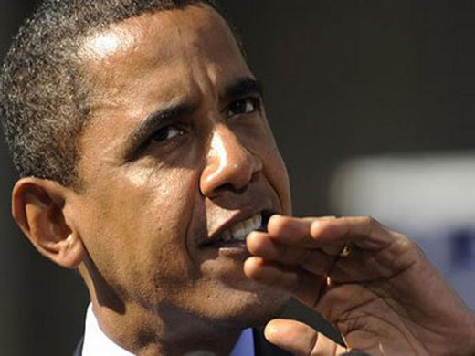
Responding to a letter sent to the White House last week by the American Medical Association (AMA), President Obama said Wednesday that he wants doctors to talk to their patients about responsible gun use.
The letter, which requested increased federal and state funding for medical programs that “reduce the stigma of seeking mental health services,” was signed by the AMA and 52 other medical organizations, including the American Psychiatric Association, the American College of Physicians, and the American Academy of Pediatrics.
The letter, which invoked the Newtown, Connecticut shooting massacre on Dec. 14th, referred to a ban on assault weapons as “a step in the right direction,” and called for a ban on high capacity magazines. The associations represented by the letter also requested increased funding for medical programs from the White House:
More resources are needed for safety education programs that promote more responsible use and storage of firearms. Physicians need to be able to have frank discussions with their patients and parents of patients about firearm safety issues and risks to help them safeguard their families from accidents.
While the overwhelming majority of patients with mental illness are not violent, physicians and other health professionals must be trained to respond to those who have a mental illness that might make them more prone to commit violence. Funding needs to be available for increased research on violence prevention in general, and on the epidemiology of gun-related injuries and deaths in particular, as well as to implement available evidence-based interventions.
On Wednesday, during a press conference in which he issued 23 gun violence executive orders, President Obama said:
Doctors and other health care providers also need to be able to ask about firearms in their patients’ homes and safe storage of those firearms, especially if their patients show signs of certain mental illnesses or if they have a young child or mentally ill family member at home.
The AMA contributed more than $1.5 million to political candidates in 2012, including $16,000 to President Obama’s re-election campaign. The AMA also spent more than $12.9 million lobbying during the 2012 campaign.
In addition, health professionals contributed more than $10 million to Obama’s campaign, making it the fourth largest donor industry.
More than several of the executive orders issued on Wednesday also seem to serve as funding mechanisms for schools. The White House document that accompanied the orders urges numerous “incentives” and “investments” to be offered to schools to hire resource officers and school counselors, and to develop “school climate” programs. The Department of Justice is to provide incentives as well to police departments to train resource officers. The following are some proposals from the document that accompanied the orders:
- Take executive action to provide incentives for schools to hire school resource officers: COPS Hiring Grants, which help police departments hire officers, can already be used by departments to fund school resource officers. This year, the Department of Justice will provide an incentive for police departments to hire these officers by providing a preference for grant applications that support school resource officers.
- Put up to 1,000 new school resource officers and school counselors on the job: The Administration is proposing a new Comprehensive School Safety program, which will help school districts hire staff and make other critical investments in school safety. The program will give $150 million to school districts and law enforcement agencies to hire school resource officers, school psychologists, social workers, and counselors. The Department of Justice will also develop a model for using school resource officers, including best practices on age-appropriate methods for working with students.
- Invest in other strategies to make our schools safer: School districts could also use these Comprehensive School Safety Grants to purchase school safety equipment; develop and update public safety plans; conduct threat assessments; and train “crisis intervention teams” of law enforcement officers to work with the mental health community to respond to and assist students in crisis. And the General Services Administration will use its purchasing power to help schools buy safety equipment affordably…
- Helping schools address pervasive violence: Twenty-two percent of 14 to 17 year olds have witnessed a shooting in their lifetime. Research shows that exposure to community violence can impact children’s mental health and development and can substantially increase the likelihood that these children will later commit violent acts themselves. To help schools break the cycle of violence, Congress should provide $25 million to offer students mental health services for trauma or anxiety, conflict resolution programs, and other school based violence prevention strategies.
- Train more than 5,000 additional mental health professionals to serve students and young adults: Experts often cite the shortage of mental health service providers as one reason it can be hard to access treatment. To help fill this gap, the Administration is proposing $50 million to train social workers, counselors, psychologists, and other mental health professionals. This would provide stipends and tuition reimbursement to train more than 5,000 mental health professionals serving young people in our schools and communities.

COMMENTS
Please let us know if you're having issues with commenting.